Weapons of the Second World. Aircraft machine guns
Let's start with weapons and machine gun rifle caliber. It is clear, because the machine gun was the main thing. A large-caliber machine guns and guns - this is the second time. Although no less interesting.
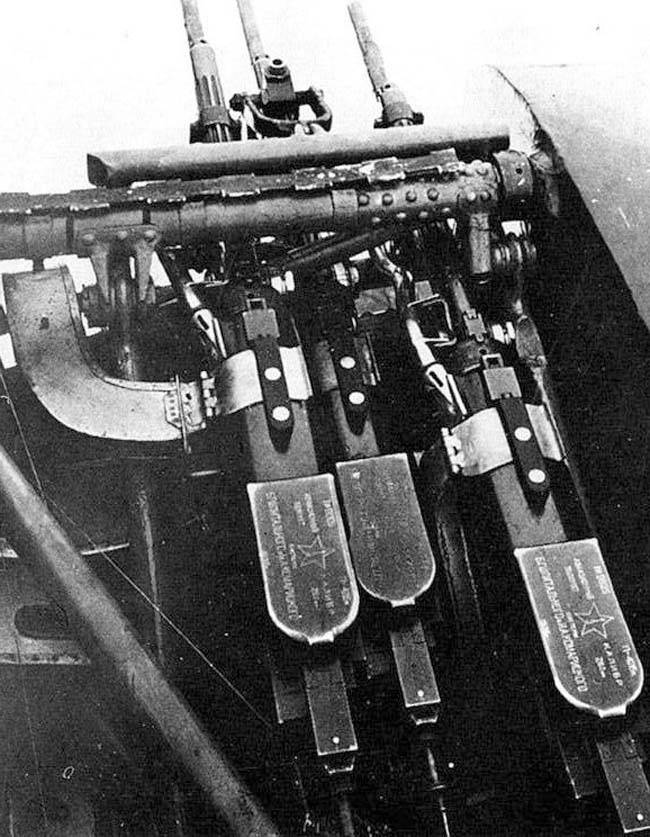
But at the time of the outbreak of World War II, the main masses of fighters of all countries were cheerfully cheating with machine guns of rifle calibers. Yes, who had guns, they were with guns. But a rifle-caliber machine gun is an indispensable and indispensable attribute of the time. So let's start with them.
Deliberately we will not set them apart, sharing the best / worst. Let's do it you.
So, let's start!
1. ShKAS. the USSR
ShKAS many consider the achievement of domestic design armory schools. And not without reason. Yes, over the years that have passed since the creation of the machine gun, the number of legends and tales about ShKAS is simply amazing, quantitatively, qualitatively.
But we’ll talk about legends another time, now we’ll note that the machine gun was really more than outstanding in some respects and constructive solutions. Incredible at that time, the rate of fire was provided precisely by the drum cartridge supply system invented by Shpitalny. The main majority of weapon assemblies were designed by the Tula arms engineer of the pre-revolutionary school Irinarkh Andreyevich Komaritsky.
The Spit and Komaritsky machine gun was seriously different from the classical schemes of the time. The main highlight is that the developers were able to turn the main inconvenience of an outdated domestic cartridge with a flange flange into dignity.
Due to the presence of the flange, the cartridge could roll along the helical groove of the drum and remove it from the belt and feed it in 10 shots.
ShKAS was a universal machine gun. By 1934, the wing and turret versions were mastered, and from 1938, a synchronous model was also installed on the aircraft.
The use of a synchronizer somewhat reduced the rate of fire, up to 1650 shots per minute, the wing and turret versions had a rate of fire 1800-1850 shots per minute. But on the synchronous version to compensate, the barrel was extended by 150 mm, which gave better ballistics.
Advantages: the best rate of fire at the time in the world, good ballistics cartridge.
Disadvantages: complex design and high cost. The machine gun was very capricious of pollution, there were more than 30 types of delays when shooting.
2. Browning 0.30 M2-AN. USA
It is a pity, of course, that John Browning did not live to see the moment when his offspring began a solemn procession across countries and continents. But Browning died in the 1926 year, and the machine gun fell on the wing in the 1929.
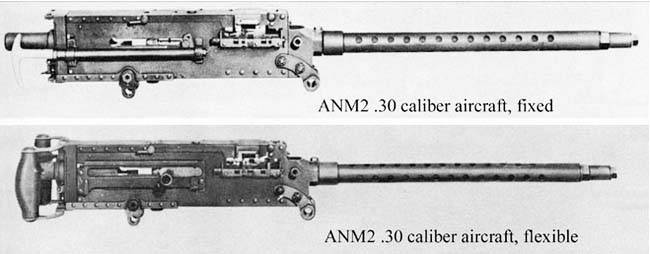
In general, the fate of the machine gun was not easy. The adoption of the M2 coincided with the onset of the Great Depression in the United States and the subsequent financial crisis. All new military developments were curtailed, and the production of machine guns M2 went unhurried pace until the beginning of the 2-th world war.
It looks like today, but in another country, isn't it? But yes, the export rescued. And not just rescued. The Belgians were the first to buy a license, and FN began to produce the FN38 / 39 machine gun with minimal changes.
In 1935, the British were joined by the Belgians, worn out with the Vickers. The British pretty worked on the machine gun and made a lot of changes to the M2, including adjusting the caliber. “Browning 0.303. Mk II ”became the basis of aviation weapons in the UK during the 2 World War II.
By the beginning of the 2 World War II in the United States, the caliber of 7,62-mm (0,3 inches) was considered insufficient to arm the aircraft. And the M2 began to give way to another machine gun, ".50 Browning AN / M2".
By 1943, 7,62-mm Browning М2-AN was finally removed from combat use and was used as a weapon for firing training in the training of pilots.
But nevertheless, he played a very significant role in the war, since ALL, without exception, American planes launched before 1941 were armed with this machine gun.
The release of the Browning MXNUM-AN machine gun is estimated at more than half a million pieces, including licensing ones.
Advantages: low weight, reliability, excellent rate of fire, good ballistics.
Disadvantages: a rather complicated scheme (Browning differed in this).
3. MAC 1934. France
"I blinded him!" Just blinded, without continuing. The machine gun is very, very peculiar, more than ten years have passed since the beginning of work and before putting it into service. But the French needed a machine gun for aviation, and now ...
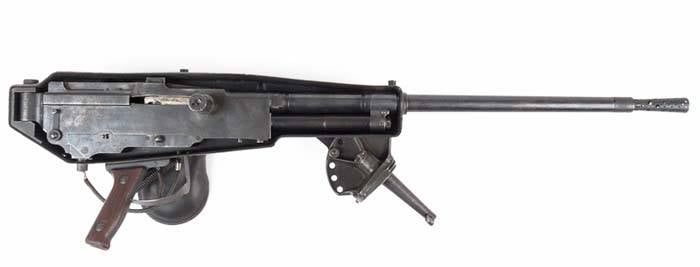
Designers from the state arsenal of Chatellerault decided to create a new weapon for France, using the achievements of their company "Berthier" and the American "Browning".
So in 1934, the version of the MAC machine gun Mle1931 was virtually unchanged and put into service with French aircraft under the designation MAC 1934.
The machine gun was intended for installation on all aircraft, but for the first time it was intended for installation in the wing.
Here, the French staged a show that will actually remain in the annals of aviation weapons stories.
According to the idea of the designers, the MAC 1934A (wing) was supposed to carry out ammunition from ... stores! For this, hefty drum shops for 300 or 500 cartridges were designed. So far, these monsters confidently hold (soon 100 will mark the years) first place among all the shops of all times and peoples. No one has surpassed by volume.

It is clear that the aircraft designers were just happy to invent all sorts of fairings for these monsters, since these drums did not fit into one normal wing. Or, as an option, have the machine guns sideways, which caused ardent love among gunsmith technicians. Yes, also the drive for feeding the cartridges was pneumatic, through a gear pair ...
Very interesting machine gun ...
For the use of a machine gun as a defensive weapon of the bombers, the “tiny” shops on 150 and 100 cartridges were invented.
After a few years, having been fed up with this perversion, the French still decided that it was necessary to be funny about tape feeding. And then fate made them a present in the person of the I-15bis with a Spanish pilot, who fell into their hands through a flight from Spain, where the civil war ended.
The French have carefully studied the ShKAS and ... just tore off at 101% the cartridge supply system!
And - lo and behold! - France has a normal machine gun! Which was put on all French fighters and bombers until the moment France ended in the war. This is the “Chatellerault MAC 1934 Mle39” with tape feed. Used as a cloth tape, and metal. The rest - MAS 1934 and ShKAS.
Advantages: high rate of fire (French sources say about 1400-1500 rds / min, but modern experts say that the real numbers are 1200-1300 rds / min).
Disadvantages: like all similar structures did not differ reliability.
The ballistics was average due to the low initial velocity of the bullet, which was partially offset by the barrel length, but partially.
4. MG-131 / 8. Germany
In terms of machine guns, of course, the large-caliber product of the Rheinmetall concern was more than known. The compact heavy machine gun MG.131 was produced in turret, synchronous and wing versions.
But we are not talking about the MG.131 itself, but about the MG.131 / 8, the transition model of the 7,92-mm caliber. They passed from the MG.15 and MG.17 machine guns, from which they inherited the construction of the majority of units and the principle of operation.
The history of fine-tuning the machine gun took three whole years (which is generally uncharacteristic for the Germans) and the machine gun came into service only at the end of 1941 of the year.
The machine gun can be called the next generation of weapons. The device used a system of electric ignition of the primer, which significantly affected the rate of fire of the weapon. The recharge was double electropneumatic. The machine gun was really bilateral, that is, by rearranging several parts, it was possible to change the direction of movement of the tape. The electropneumatic charging mechanism could also be rearranged from one side to the other, which greatly facilitated life when mounting the machine gun in the wings or in the synchronous version.
Beginning with the 1942, MG.131 / 8 confidently registered as a synchronous machine gun under the hood of Messerschmitt fighters Bf-109 and Focke-Wulf FW-190. It was produced by confident parties until the end of the war, and if the fighters gradually switched to the large-caliber version, then the bombers on the turrets and in the MG-131 / 8 tower installations were installed until the very end of the war.
And even after the end of production in the 1944 year (more than 60 thousand pieces were produced in all), the machine guns unclaimed in aviation were easily converted into manual guns and transferred to the Wehrmacht. The system of electric ignition of the machine gun was changed to a standard firing mechanism, the machine gun was completed with bipods and a shoulder rest or with a machine tool.
Advantages: high rate of fire, excellent ballistics, the best initial speed of a bullet, reliability.
Disadvantages: heavy in the complete set with electro-running and reloading and feeding mechanism.
5. Breda-safat. Italy
The Italian forge of weapons is something. These are “Beretta”, “Breda”, “Benelli” and so on. This is the design thought of higher flight. And, frankly, the implementation is so-so. Perhaps the culprit Italian disorder. However, judge for yourself.
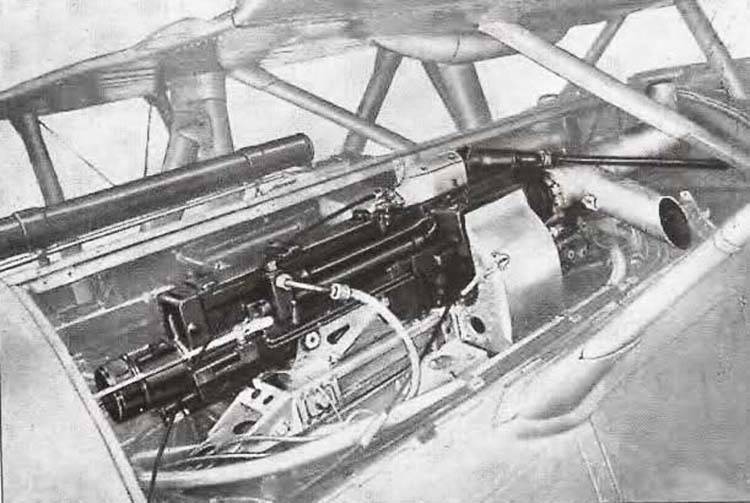
Società Italiana Ernesto Breda is one of the oldest in Italy. It was founded in 1886 in Milan. That's just not producing weapons, and locomotives. But here Ernesto Breda decided that the designer was not the only person who was alive with the locomotive and started creating weapons.
Having trained the personnel on the licensed assembly of the FIAT-Revelli M1914 machine gun, Breda went further. And he presented himself to Mussolini himself (Breda financed the party of fascists, so everything is logical here) the design of the machine gun.
Mussolini gave the command not only to start production without waiting for the test results, but also to produce two machine guns at once, with different calibers, 7,7 and 12,7-mm. We will look at the heavy machine gun in the next article (everything was very sad with it), but the original, 7,7-mm, turned out to be quite to itself. The product is called "Breda-SAFAT".
Machine guns Breda-SAFAT installed on almost all types of combat aircraft produced in Italy until the debugging of the large-caliber version. That is, until 1942. But what was normal for 30's (2 7,7-mm synchronous machine guns) has become nothing at all since the beginning of the war.
In general, the Italians are not lucky. 7,7-mm machine guns quickly disappeared from the scene at the beginning of the war, and with further developments on larger calibers simply did not have time, and the war ended for Italy.
But on the ground, machine guns Breda-SAFAT, oddly enough, served until the 70s of the last century as anti-aircraft guns.
Advantages: reliability and reliability.
Disadvantages: weak ballistics, low initial velocity of the bullet.
6. Vickers E. United Kingdom
This machine gun has been released a lot. According to various estimates at least 100 thousand. But war is not only quantity, but also quality. And here we have in two ways.

Once, at the end of the 19 - the beginning of the 20 century, the English armament was considered the best in the world, but English conservatism ruined a lot, including this. The British gunsmiths were, after all, in many ways the foremost guys, having invented a loose machine gun belt, a hydraulic synchronizer and a defensive turret for bombers, the so-called "Scarff Ring". But machine guns ... Yes, there was a reliable and reliable Vickers Mk.I, but still it is essentially a modified "Maxim".
At the very beginning of the 20 century, the British corporation Vickers bought out the patents of the American engineer Hiram Maxim. Bringing the machine gun to perfection with the inherent British thoroughness, the British army adopted the Vickers Mk.I.
Life machine gun in a series of modifications was very long. But the paradox, in Britain itself, he did not take root. The British military department chose to adjust the licensed release of the Browning machine gun.
And Vickers had a pretty long life in license execution. Polish, Czech, Australian and Japanese machine guns, with a greater or lesser degree of success, fought almost the entire war.
Advantages: simplicity, reliability.
Disadvantages: low rate of fire, not the best ballistics.
7. Type 89-2. Japan
Japan has become a victim of its friendship with Britain. In the prewar period, the role of the main aviation machine gun was firmly occupied by the Vickers class E caliber 7,7 mm, the export version of the Vickers Mk.V.

Naval aviation also adopted its Vickers aircraft. It is worth remembering that unlike many countries in Japan, naval aviation was a separate force. The downside was that in addition to machine guns, Japanese forces were forced to buy ammunition for them. Japanese aviation was very dependent on imports.
From 1929 to 1932, the Vickers E machine gun was produced under the designation “Type 89 model 1”. But later it was replaced with the new model “Type 89 model 2”, in which it was possible to use both the old cartridge “Type 89” and the new “Type 92”.
The machine gun "Type 89 model 2" was produced in large series until the very end of the Second World War. It is clear that even at the beginning of the war the machine gun did not meet modern requirements. But the conservatism of the Japanese is quite comparable with the conservatism of the British, so the "89 Type 2 model" fought to the very end of Japan.
The machine gun was used in synchronous installations of Japanese fighters and light bombers of almost all types. His main "chip" was that in synchronous performance, he almost did not lose the rate of fire in comparison with the wing version.
Naval aviation used the same machine gun at the same time as their land colleagues, but unlike them, licensing agreements did not bother at all. Before 1936, Japanese naval pilots used purchased machine guns, and only after they started to produce the 97 Type machine gun, which differed little from the 89 Type 2 model.
Advantages: reliability and practicality of "Vickers".
Disadvantages: Vickers flaws.
And who was the best?
Sources:
Yevgeny Aranov. Browning aircraft machine guns.
Alexander Shirokorad. The history of aviation weapons.
Yevgeny Aranov. Aircraft weapons in Germany.

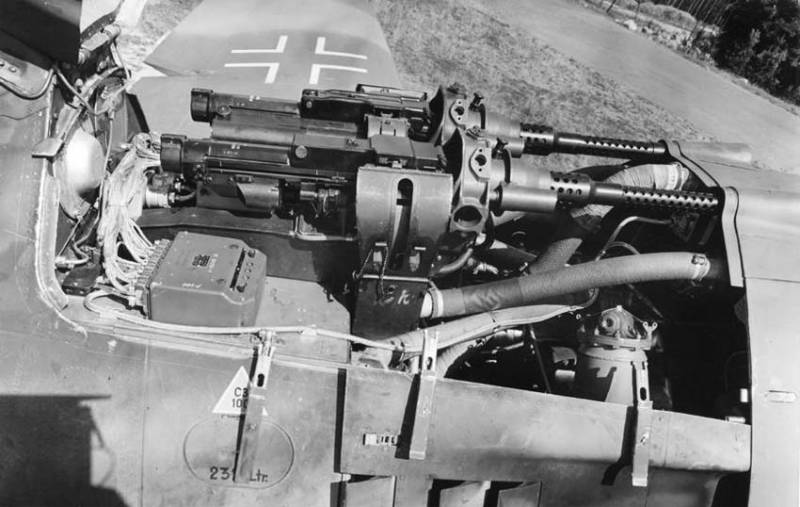
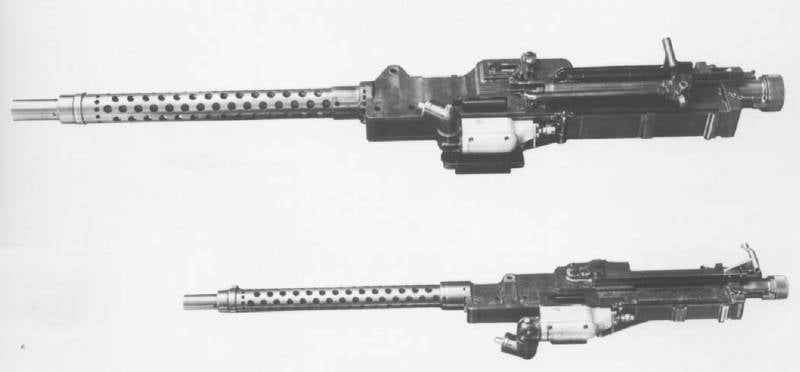

Information